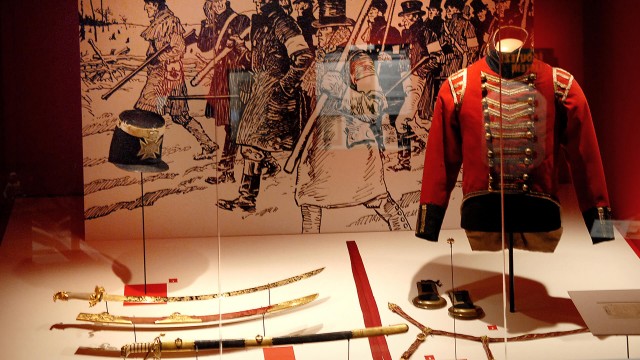Previous exhibition
May 20th, 2008 — October 12th, 2008
France, New France — Birth of a French People in North America
To emphasize the importance of the historic events in 1604-1605 (Saint Croix Island and Port-Royal) and in 1608 (Quebec City) that marked the beginnings of French colonization in New France, Pointe-à-Callière prepared an exhibition on French settlement in North America.
The exhibition, co-produced with the Musée du Château des ducs de Bretagne in Nantes, looks at two centuries of migration and traces the destinies of a number of noteworthy men and women who left their towns or villages in France to settle in Acadia, the St. Lawrence Valley and Louisiana. Since 2004, the exhibition has been touring different museums and interpretation centres in France and Canada.
Migration
As part of the initial European migration, French settlement here was a totally new adventure. Unlike the later successive waves of immigrants who would merge into an existing society, the French came to live in a new land, New France, albeit one already inhabited by many aboriginal nations. It was a land they would have to build from many different parts, or even create from nothing. In this exhibition we adopt a human approach and take a more personal look at history, through individual stories, rather than focusing on dates and events.
Period covered
The exhibition covers the entire French Regime, from the first explorations in the 16th century to the Conquest and the Treaty of Paris in 1763. The most decisive period for French settlement in North America was the 17th century. The years 1653 and 1663 were key dates for Montréal and New France, for in 1653 La Grande Recrue arrived from France, some one hundred hired settlers who would save Montréal. In 1663 the mother country adopted a true colonial policy and began taking steps to populate the lands explored by French adventurers and over which it now intended to assert its authority.

